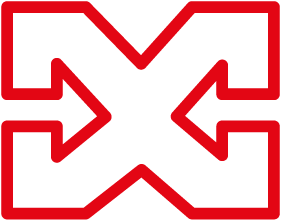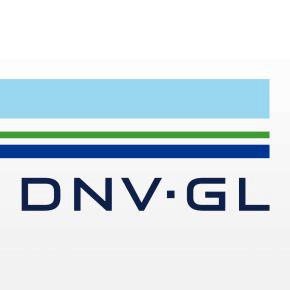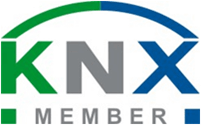Introducing CANx: new open protocol
for building control, m2m, IoT and other
remote control and measurement applications
for building control, m2m, IoT and other
remote control and measurement applications

Preamble ;)
No installer will use wireless
when high reliability is required
No installer will use wireless
when high reliability is required
It's a fact!

We will compare CANx with best representatives of
existing IoT technologies - ModBus, BACnet, DALI, KNX etc.
For comparison we have chosen KNX. In our opinion it is
one of the best integral IoT solutions (ease to work with,
technical perfection)
We will not cover any IP-only protocols like MQTT

Why have we decided to create new
protocol based on wired media?

When newest specification was made 25
years ago, such things as data encryption
and security, usability were not important
Nobody thought about ecosystem concept:
not only protocol specification, but also a
universal way of commissioning

We decided to build upon existing wired
home and building automation standards
(KNX, ModBus, BACnet)
We chose KNX for several reasons, including
centralized software for programming and
commissioning

KNX is good but has plenty
of disadvantages!
of disadvantages!

- Low speed: 9.6 kbit (way too low for today's projects)
- Security: cannot be made without full redefinition of standard
- Not fully open standard (meaning you can participate if you are
part of the alliance and pay your fees) - Commissioning and operation with KNX is centralized
through ETS which is a property of KNX Association. - Only KNX Association members can manufacture devices for KNX
- KNX targets only home and building automation. It is missing
concepts for modern IoT approach (universal bus for any
automation system) - KNX is also missing some modern features like semantics

We've improved upon drawbacks of KNX
while leaving the same user-experience and
compatibility

We've chosen to build something new
but based on time-proven technologies
In aviation industry absolutely new plane
is the one that has maximum 25% of new parts,
because you must use only proven solutions.

Without any compromise in quality/functionality we have
created our specification based on K.I.S.S. approach
(Keep it simple stupid)
created our specification based on K.I.S.S. approach
(Keep it simple stupid)
- It should be possible to discover, identify and configure
installed devices in a uniform way - Autonomous/distributed device operation
- Uniform way of device firmware upgrade

We've chosen to build something new
but based on time-proven technologies
In aviation industry absolutely new plane
is the one that has maximum 25% of new parts,
because you must use only proven solutions.

We have chosen CAN FT as basic media
CAN FT is the latest version of international standard
ISO 11898-3:2006

1:1 mapping to KNX for most common
data types
CANx follows the same group addressing
scheme
There's no need to change anything from
user side to interconnect CANx and KNX

Bus speed is improved >10 times
compared to KNX
Maximum cable length is 300 meters

CAN is time and harsh environment
proven technology
CAN is popular fieldbus system in space,
automotive, aerospace, railway industries
proven technology
CAN is popular fieldbus system in space,
automotive, aerospace, railway industries

CAN devices do not require any
termination circuits
termination circuits
Any topology (except loop) can be used:
Line, Star, Tree

More about media

CANx can work over any any IP network
like Ethernet, WiFi, Optics, 4G/5G etc.
Wireless CANx can works over LoRa radio
It can reach the same range that any LoRa modulation
based technologies can reach - up to 15 km802.15.4 protocol (6LoWPAN, ZigBee) can be used as
a transport as well

Besides fault-tolerant version, CAN FD
can be used - providing speeds up to
10 Mbit/s

The only drawback is that additional 2 wires must be
used for powering.
Reasons for this:
- It is not possible to combine both powering and high
transfer speed within the same wires. Additional 2 wires
of standard KNX cable can be used for powering devices - Many KNX devices still require an additional power
supply because the capacity of bus-provided power
is very limited - External power supply helps making fully galvanically
isolated CAN devices much easier

User experience

- Same WAGO connectors are used as in KNX
which are easy to plug and easy to maintain - Additional features like an ability to flash
device's LED to find it - Each device has a communication status LED
which flashes during message reception

Security

Telegram filtering can be used to
prevent sensitive data from passing
to unwanted segments
prevent sensitive data from passing
to unwanted segments

- Direct telegrams can be disabled, so parameters and addressing
cannot be changed. This way only group communication works - Device status can be checked via ping telegram, it replies with
a number of telegrams that were not sent/received correctly - Object status (input/output) can be checked via ping telegram.
Device replies with error code - broken wire, short-circuit etc - Wireless encryption uses strong ChaCha20 algorithm

Commissioning tool

- Commissioning tool is common for all CANx devices.
It works as a web-application (part of LogicMachine) - Each device has a unique hardware and software ID.
Configuration profile is downloaded by the
commissioning tool automatically - ETS project files can be imported and enriched
with semantics

Résumé

- CANx is an open standard protocol for m2m, IoT and other remote
control and measurement applications - It enables simple, low-cost devices to be networked together with
high-end computers and/or to work as an autonomous system - Free and open. No usage, patent or other costs for its
implementation and use - CAN bus is very reliable and widely-supported. It allows manufacturing
of low cost nodes that can work reliably, efficiently and can be trusted
in day-to-day operation - Other networks (IP, wireless etc) can be used as a transport

47. Katolu str., Riga, LV 1003, LATVIA
Phone: +371 67648888
E-mail: info@openrb.com
Phone: +371 67648888
E-mail: info@openrb.com




/logicmachine
